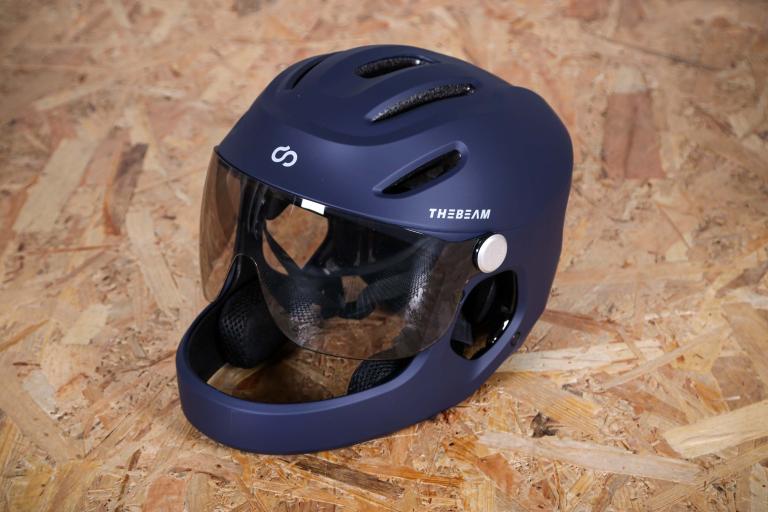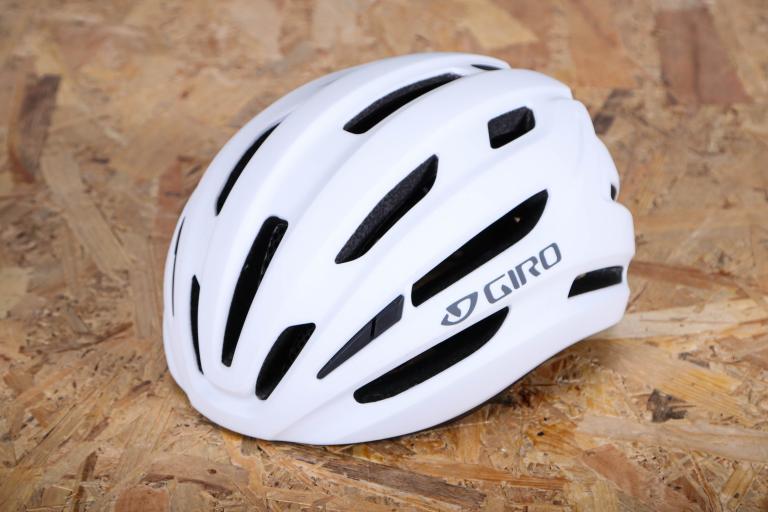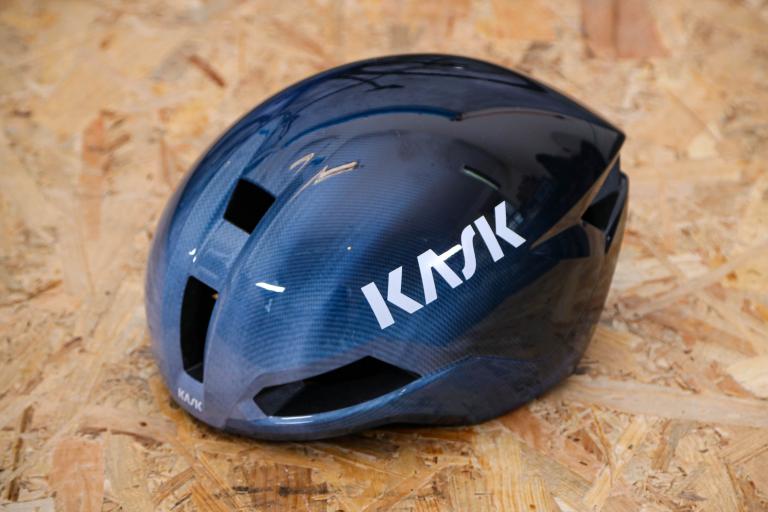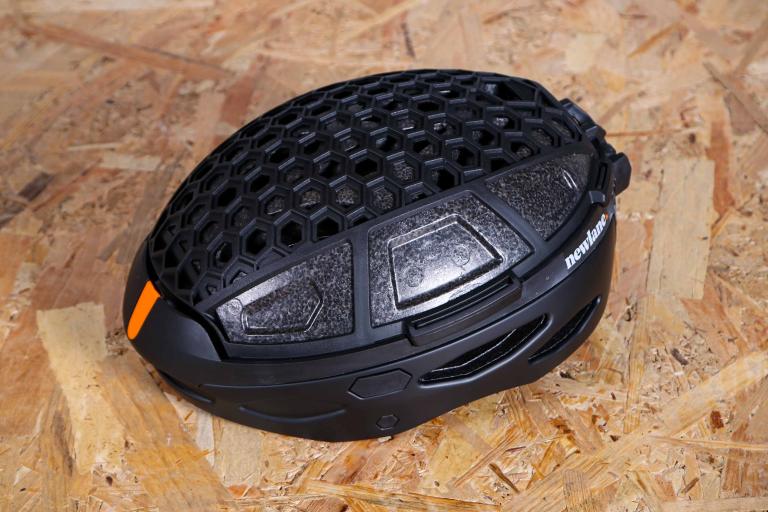- News
- Reviews
- Bikes
- Accessories
- Accessories - misc
- Computer mounts
- Bags
- Bar ends
- Bike bags & cases
- Bottle cages
- Bottles
- Cameras
- Car racks
- Child seats
- Computers
- Glasses
- GPS units
- Helmets
- Lights - front
- Lights - rear
- Lights - sets
- Locks
- Mirrors
- Mudguards
- Racks
- Pumps & CO2 inflators
- Puncture kits
- Reflectives
- Smart watches
- Stands and racks
- Trailers
- Clothing
- Components
- Bar tape & grips
- Bottom brackets
- Brake & gear cables
- Brake & STI levers
- Brake pads & spares
- Brakes
- Cassettes & freewheels
- Chains
- Chainsets & chainrings
- Derailleurs - front
- Derailleurs - rear
- Forks
- Gear levers & shifters
- Groupsets
- Handlebars & extensions
- Headsets
- Hubs
- Inner tubes
- Pedals
- Quick releases & skewers
- Saddles
- Seatposts
- Stems
- Wheels
- Tyres
- Health, fitness and nutrition
- Tools and workshop
- Miscellaneous
- Tubeless valves
- Buyers Guides
- Features
- Forum
- Recommends
- Podcast
review
 Louis Garneau Diamond helmet
Louis Garneau Diamond helmet£129.99
VERDICT:
Well vented, and very comfortable… but retention cradle failed in a crash
Weight:
330g
Contact:
www.evanscycles.com
At road.cc every product is thoroughly tested for as long as it takes to get a proper insight into how well it works. Our reviewers are experienced cyclists that we trust to be objective. While we strive to ensure that opinions expressed are backed up by facts, reviews are by their nature an informed opinion, not a definitive verdict. We don't intentionally try to break anything (except locks) but we do try to look for weak points in any design. The overall score is not just an average of the other scores: it reflects both a product's function and value – with value determined by how a product compares with items of similar spec, quality, and price.
What the road.cc scores meanGood scores are more common than bad, because fortunately good products are more common than bad.
- Exceptional
- Excellent
- Very Good
- Good
- Quite good
- Average
- Not so good
- Poor
- Bad
- Appalling
Louis Garneau's range-topping Diamond helmet looks good, boasts an impressive vent count and is extremely comfortable to wear...however, we had a pretty fundamental problem with ours.
Whilst they are a relatively unknown brand here in the UK, Louis Garneau have been around for over 25 years, starting out as a family garage based operation and growing into a brand capable of taking on the big players in the cycling apparel market.
If you watched the Tour de France, you will have no doubt seen one of Louis Garneau's helmets on the head on 'little Tommy Voeckler' as he lit up the race in the yellow jersey. Interestingly, the Europcar team are using the Quartz model, and not the top of the range Diamond reviewed here.
In the helmet vent count wars, the Louis Garneau Diamond comes out near the top with a wapping 40 vents. Closer inspection, however, reveals that 8 of these are absolutely tiny, what Louis Garneau call 'Venturi Vents'. Wind tunnel testing has supposedly verified the effectiveness of these vents, but I can't help thinking that in real world conditions, they don't noticeably improve airflow; some of them were even covered up by the pads. No matter though, because the other 32 vents are large and well positioned enough to do a great job of cooling down your noggin. Internal channels provide a pathway for the air to flow over the head whilst large rear vents enable the heated air to be expelled. Overall, ventilation is on par with other helmets in this price bracket.
So how does Louis Garneau achieve this vent count whilst retaining the helmet's structural integrity? The Diamond features in-mould construction which fuses the plastic outer shell to the polystyrene moulding, as well as two composite ribs which run the length of the helmet. This composite skeleton is designed to spread any impact over a larger area, enabling larger vents to be used. Additionally, the Diamond also features a plastic shell running around the rim of the helmet lending it a really 'solid' feel. This extra shell is part of the reason why the Diamond weighs in at a relatively porky 310g (claimed) for the size large tested. The helmet is certified to the US CSPC standard which is more rigorous than its EU equivalent, and it's also possible to order a variant conforming to the Australian standard, which is even tougher still.
In use, the Diamond sits quite low on the head which prevents the mushroom-head look associated with a lot of helmets. The helmet extends down reassuringly low at the back and sides, providing good coverage for such a race oriented lid. The straps are easy to adjust to one's personal preference using a nifty locking cam system. The plastic cradle which raps around the back of the head is vertically adjustable with 7 possible positions giving a total range of around 30 degrees, and features a rather brilliant ratchet dial. Easily operable with one hand, the dial is big and rubberized, with a smooth action which feels absolutely brilliant in use. Additional padding on the rear of the cradle makes this the Rolls Royce of helmet retention systems; it was truly the most comfortable helmet I have ever worn.
Now for the bad news.
Whilst testing the helmet, I crashed twice at relatively low speeds, both times during a race. In both cases, the retention cradle disconnected from the helmet on one side, allowing the helmet slide around on my head - not ideal. Inspection post-race showed that the cradle is attached to the shell via a clip-in fitting which hadn't withstood the forces involved. A helmet's retention system is there to ensure that the helmet remains in the optimal position during a crash, so this failure is a serious compromise of safety. I haven't heard or read of others experiencing this problem, but it seems to me that the cradle attachment method should be a lot more secure than it is. Suffice to say that I quickly ditched the Diamond in favour of something that stayed on my head in a crash.
Given the nature of the fault we contacted Evans Cycles Louis Garneau's UK distributor, both they and Louis Garneau expressed their disappointment that the helmet failed to live up to our expectations in this vital aspect of performance. We then sent it back to Evans for initial examination and they sent it straight on to Louis Garneau in Canada so that their helmet engineer could examine it to find out whether we simply had a dodgy lid, or if there was a problem with that particular batch, or if there is some weakness in the design of the cradle itself. As soon as they have any information on this we'll update the review with it.
Verdict
Ultimately, no matter how good the Diamond felt whilst riding, the simple fact is that it failed to protect my head in a crash. I think Louis Garneau need to go back to the drawing board on this one, and redesign the cradle attachment method as it ruins an otherwise excellent helmet.
road.cc test report
Make and model: Louis Garneau Diamond helmet
Size tested: Large
Tell us what the product is for, and who it's aimed at. What do the manufacturers say about it? How does that compare to your own feelings about it?
Louis Garneau say:
"The Diamond Helmet represents our greatest achievement in helmets. At 285 grams and over 40 vents, we have designed a helmet to out perform the competition. Through patented technology, we have unleashed an absurd amount of ventilation while still meeting safety standards. Worn by Chrissie Wellington in her record-setting 2009 Ironman World Championship title."
Tell us some more about the technical aspects of the product?
Weight: 10.1 oz/285 g
Certifications: CPSC-ASTM-CEN-AS 2063
Vents: 40
In-Mold Construction: Industrial process binding the microplastic and polystyrene together to add superior mechanical properties to these materials.
Evacuation channels: Internal channels provide better airflow and evacuate moisture and heat.
Super MSB Technology: Ring-shaped protection at the base of the helmet reinforces the perimeter for enhanced protection.
Exo-Insert Technology: Lightweight inner plastic reinforcement spreads the shock of impact and helps maintain the helmet's structure.
Composite Reinforcement: Lightweight composite skeleton provides structural support and integrity on impact.
Spiderlock Elite: Adjustable and detachable rack-and-pinion mechanism using only one hand to stabilize the helmet on the head. It is provided with ergonomic padding.
Steplock Divider: Cam locking device to quickly adjust strap position.
Sealed Airdry Padding: Washable sealed adjustment padding for enhanced durability, ergonomic design for optimum comfort.
S: 6 1/2-7; 20 1/2" - 22"; 52-56 cm
M: 7-7 3/8; 22" - 23 1/4"; 56-59 cm
L: 7 3/8-7 3/4; 23 1/4" - 24 1/2"; 59-62 cm
Rate the product for quality of construction:
8/10
Construction quality was good. The issue with the retention system is more of a design fault than a manufacturing fault.
Rate the product for performance:
3/10
Doesn't stay on your head in a crash.
Rate the product for durability:
3/10
Retention system failed to withstand some minor crashes
Rate the product for weight, if applicable:
6/10
Not the lightest, but it feels lighter than it is in use, due to the excellent fit
Rate the product for comfort, if applicable:
9/10
The most comfortable helmet I've worn. No tight spots and the padding on the retention system is sublime.
Rate the product for value:
7/10
Is it twice as good as a helmet half the price? No, but this is the price of a top-of-the-range helmet these days.
Did you enjoy using the product? Yes...until I crashed
Would you consider buying the product? No
Would you recommend the product to a friend? No
About the tester
Age: 20 Height: 190cm Weight: 70kg
I usually ride: Giant TCR Advanced 2 My best bike is: Canyon Ultimate CF7
I've been riding for: Under 5 years I ride: Every day I would class myself as: Expert
I regularly do the following types of riding: road racing, sportives, mtb,
For 5 years, racing was my life and I went all the way from a newbie bonking after 40 miles, to a full-timer plying my trade on the Belgian kermesse scene. Unfortunately, the pro dream wasn't meant to be and these days, you're more likely to find me bimbling about country lanes and sleeping in a bush on the side of the road.
Latest Comments
- ktache 2 sec ago
She's not been dressing up in this series. In her first few series she reminded me of a Gerry Anderson puppet.
- swagman 31 min 57 sec ago
Concerning the mudguards the front one needs to attach to the back of the fork than the front.
- Secret_squirrel 42 min 16 sec ago
Why should they be forced to play in a market that's being gobbled up by the Chinese?
- geofft 1 hour 19 min ago
Can't say that was my experience touring Taiwan last year. Taipei was a bit hard in places to find or keep on the bike route but no worse than...
- Dnnnnnn 1 hour 51 min ago
That's why I tend to go via Colston Street and Park Row!
- HLaB 3 hours 9 min ago
Never as spectacular but I have had the rear QR loose after changing a p'ture. I thankfully could feel it pop out and quickly sat down.
- chrisonabike 4 hours 41 min ago
Partly agree - and the great thing with cycling is it can be "a little here, a bit more there" - it's local so it could still flourish in just a...
- Safety 5 hours 32 min ago
I am pleased for the family that it sounds this is finally going to be resolved. And while I detest the behaviour of the insurance company I think...
- Smoggysteve 6 hours 40 min ago
A lot of these brands like Winspace , Planet X, Dolan, etc etc which are pretty much the same open mould Chinese cranes have been around for...




Add new comment
4 comments
Because everyone's head shape is little different, some helmets are designed to better fit those with more rounded or more elongated heads.
My head falls into the more "elongated" category. I've taken a few low speed spills and not had any problem with this helmet.
I notice the spiderlock only requires four clicks to have a really secure fit. Even with no clicks it feels quite secure on my head with the chin strap secured.
So I wonder if the problem is that the reviewer just has a head shape that is not optimal for this helmet and would be better served with another. It does sounds like he is quite experienced, and yet other possibilities include that he would have had a better fit with a one size smaller helmet, the 15 mm provided pads would have given a better fit, or the chin straps were not adjusted tightly enough.
I don't think the manufacturer is just "giving a line" about the spiderlock system being not necessary for protection.
I kept my original instuctions and it says "Spiderlock is your helmet stabilizing system and is not part of the retention system (strap). The stabilizing system gives you a quick and accurate adjustment of your head circumference for a better comfort."
So anyone trying this, or any other helmet with a system like Spiderlock, it is important they do not try to overcompensate for a loose fitting helmet by just tightening the dial. With too much "wiggle room" it is likely the helmet can still slide on your head in a crash, whether or not the fit tightening system lets go entirely or just loosens.
Helmet safety should come with a properly fitted helmet that would not turn just with the chin straps secured, not relying on the "fit system" to keep the head in place.
Not convinced on that one....was thinking of the Quartz...but if that's the 'way' the spiderlock works...then I might just give it a miss..
We've been in contact with Louis Garneau about the helmet, and here's their take on the issue:
Hi, what has been the follow up to this issue?
It's been a good few weeks since this review was published so surely they have identified the fault?
I was considering buying this helmet, but until I can get solid confirmation that this issue has been resolved or was just a one-off defect I don't want to risk it. What's the point of spending $$ on a helmet which doesn't properly perform it's primary task?